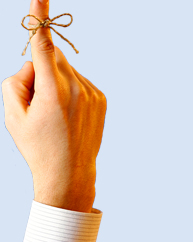The triceps brachii muscle is one of the most overlooked yet crucial muscles in upper body training. Whether you aim to build impressive arm aesthetics, improve pressing strength, or boost overall athletic performance, developing strong triceps is essential. This guide dives deep into the anatomy, biomechanics, and best training practices for maximizing triceps hypertrophy. By the end of this article, you’ll have everything you need to build bigger, stronger arms with scientifically backed training techniques.
Anatomy and Function of the Triceps Brachii
The triceps brachii, commonly known as the triceps, is located at the back of the upper arm and consists of three heads: the long head, the lateral head, and the medial head. The primary function of the triceps is elbow extension, allowing you to straighten your arm. The long head also assists in shoulder extension and adduction, making it vital for pressing and pushing movements. Studies have shown that a well-balanced triceps development enhances upper-body strength and reduces the risk of shoulder injuries by providing stability to the joint.
Optimal Training Strategies for Maximum Triceps Growth
Training the triceps effectively requires a combination of exercise selection, resistance methods, and progressive overload. Research indicates that varying the angle of resistance is key to fully stimulating all three heads of the muscle. To optimize hypertrophy, incorporate a mix of free weights, cable machines, and bodyweight exercises while ensuring proper form and control.
The Best Triceps Exercises
Some of the most effective exercises for triceps development include close-grip bench presses, skull crushers, triceps dips, and overhead extensions. Each of these movements targets different portions of the triceps, ensuring comprehensive development. Overhead movements, in particular, emphasize the long head, which contributes significantly to overall arm size.
For hypertrophy, the optimal rep range falls between 8-12 reps per set with 3-4 sets per exercise. Rest periods should range between 45-90 seconds to maintain intensity while allowing adequate recovery. Studies indicate that shorter rest intervals contribute to metabolic stress, a crucial factor in muscle growth. Advanced lifters may benefit from occasional high-rep sets (15-20 reps) to target slow-twitch muscle fibers and improve endurance.
Progressive Overload: The Key to Continuous Growth
Muscle growth occurs when the triceps are progressively challenged with increasing resistance. This can be achieved through incremental weight increases, higher volume, or modifying tempo. Ensuring proper overload while maintaining strict form is critical for avoiding plateaus and injuries.
One of the biggest mistakes in triceps training is excessive ego lifting, which leads to poor form and compensatory movements. Additionally, many lifters neglect the importance of full range of motion, limiting muscle activation. Another common pitfall is over-reliance on pressing movements like bench press variations, which do not adequately isolate the triceps. A well-structured routine should include dedicated triceps exercises alongside pressing movements.
Proper recovery is essential for muscle growth. Studies suggest that muscles require 48-72 hours of rest between intense training sessions to fully recover and adapt. Adequate sleep, hydration, and a protein-rich diet are critical components of recovery. Aim for at least 1.6-2.2 grams of protein per kilogram of body weight to optimize muscle repair and growth.
How Overhead Movements Enhance Triceps Development
Recent studies emphasize the importance of incorporating overhead triceps exercises for optimal long head activation. Movements such as overhead extensions and French presses place the muscle in a stretched position, leading to greater hypertrophy. Including at least one overhead exercise in each triceps workout is recommended for balanced growth.
To maximize growth, incorporating techniques like drop sets, supersets, and tempo variations can significantly enhance muscle engagement. Drop sets involve reducing the weight immediately after muscle failure and continuing the exercise. Supersets pair triceps exercises with antagonistic movements like biceps curls for enhanced blood flow. Tempo variations, such as slowing down the eccentric phase, increase time under tension and improve muscle recruitment.
Triceps Training for Different Experience Levels
Beginners should focus on mastering fundamental movements with moderate resistance and controlled repetitions. Intermediate lifters can incorporate advanced techniques such as drop sets and supersets, while advanced athletes may benefit from incorporating eccentric overload and tempo variations to maximize growth. Regardless of experience level, consistency and proper execution remain the most important factors in achieving results.
Injury Prevention and Mobility
Strong triceps contribute to overall shoulder health, but improper training can lead to overuse injuries. Stretching, mobility drills, and ensuring balanced development across all muscle groups can mitigate the risk of injury. Incorporating warm-up exercises such as band pull-aparts and light resistance extensions can prepare the joints and muscles for intense workouts.
The triceps brachii is a crucial muscle group for both functional strength and aesthetic appeal. By understanding its anatomy and applying targeted training strategies, you can achieve significant improvements in size and definition. Remember, a balanced approach incorporating proper exercise selection, progressive overload, and recovery is key to unlocking the full potential of your triceps development. Train smart, stay consistent, and watch your arms grow stronger than ever.













